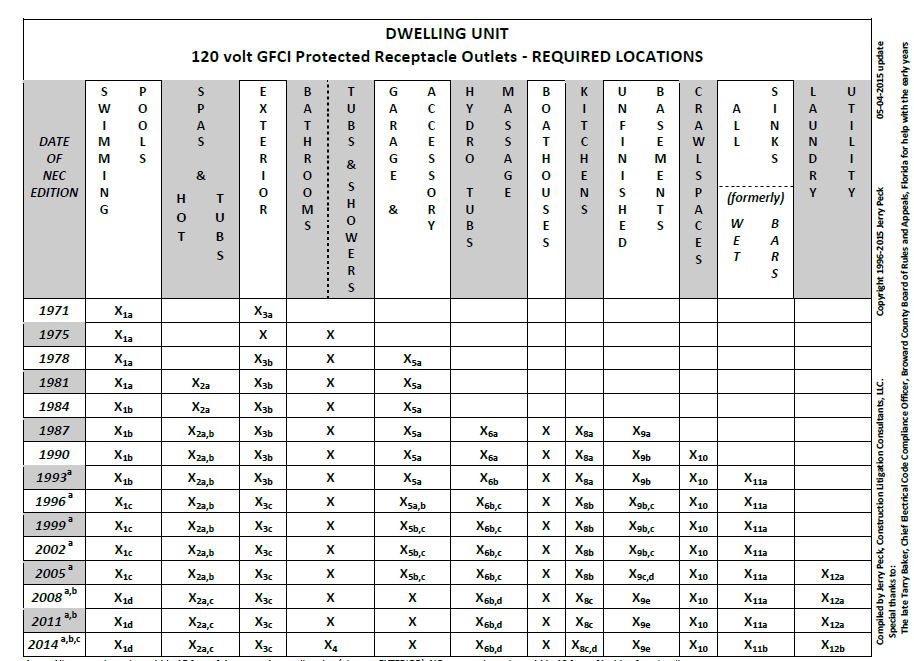GFCI Protection
GFCI protection or ground fault circuit interrupter is one of the most important electrical safety devices found in homes. GFCI protection can be in the form of a receptacle as pictured at the top of this post, or be in the form of a breaker in your electrical panel. GFCI’s function by sensing as little as 5 milliamps of differential between the supply and return conductors (hot and neutrals or ungrounded and grounded conductors) and “tripping”, shutting off power to the circuit or receptacle. This is very important as studies have shown that cardiac arrest can occur if contact is made for even a few seconds with 30 or more milliamps of current.
You may have these devices in your electrical panel, bathrooms, kitchen, garage, or basement. And if you notice these are all wet or potentially wet locations. Appliances or devices that are used in these locations have the potential to come into contact with water, and if they do, the GFCI device will detect the interruption in current and trip, shutting off the current to that receptacle or circuit in as little as 1/30th of a second.
Prior to the adoption of GFCI use approximately 800 deaths per year occurred due to accidental electrocution in areas where water was present, down to around 200 deaths per year currently.
As a Home Inspector I’m required by the State of Tennessee to operate ground fault circuit interrupters, and if they’re not present I will make a recommendation that they are installed for the safety of the occupants.
I’m not concerned with when they were required to be installed in certain areas of the home as these requirements were staggered over the span of several years. Further complicating matters is the adoption of codes from municipality to municipality or state to state. For example bathrooms were required to have GFCI protection starting in 1978, but the municipality or State may not have required it until 1979 or later. I evaluate homes by today’s standards as codes are added, updated, or changed for the safety of the occupants of a home, and that’s why you will always see a recommendation for their installation from me, even if they were not required when the home was constructed.
Your real estate contract may have a clause stating that the seller is not required to bring the home up to modern code standards, and if that’s the case I recommend hiring an electrician to install GFCI protection at all recommended locations, as it is typically a relatively inexpensive upgrade.
FYI I’ve added a chart below showing their required locations and the year the requirement was mandated.
Your Trusted Home Inspector
My name is John de Saint Georges and I own The Inspection Company LLC. I have been living in West Virginia for the last 10 years and have loved every minute of it. From the New and Greenbrier rivers and Snowshoe Mountain, this state has it all. I hope I can help you look over your new home here in the mountain state. I will let you know everything that you may need to know about your new home
Whether it’s a 1000-square-foot loft, a rambling country estate, or 6000-square-foot commercial building, I won’t rest until you’ve received my easy-to-read report and all of your questions have been answered.
The Inspection Company uses the latest home inspection software to deliver you a visual, modern home inspection report that explains our findings in a way you can understand.




